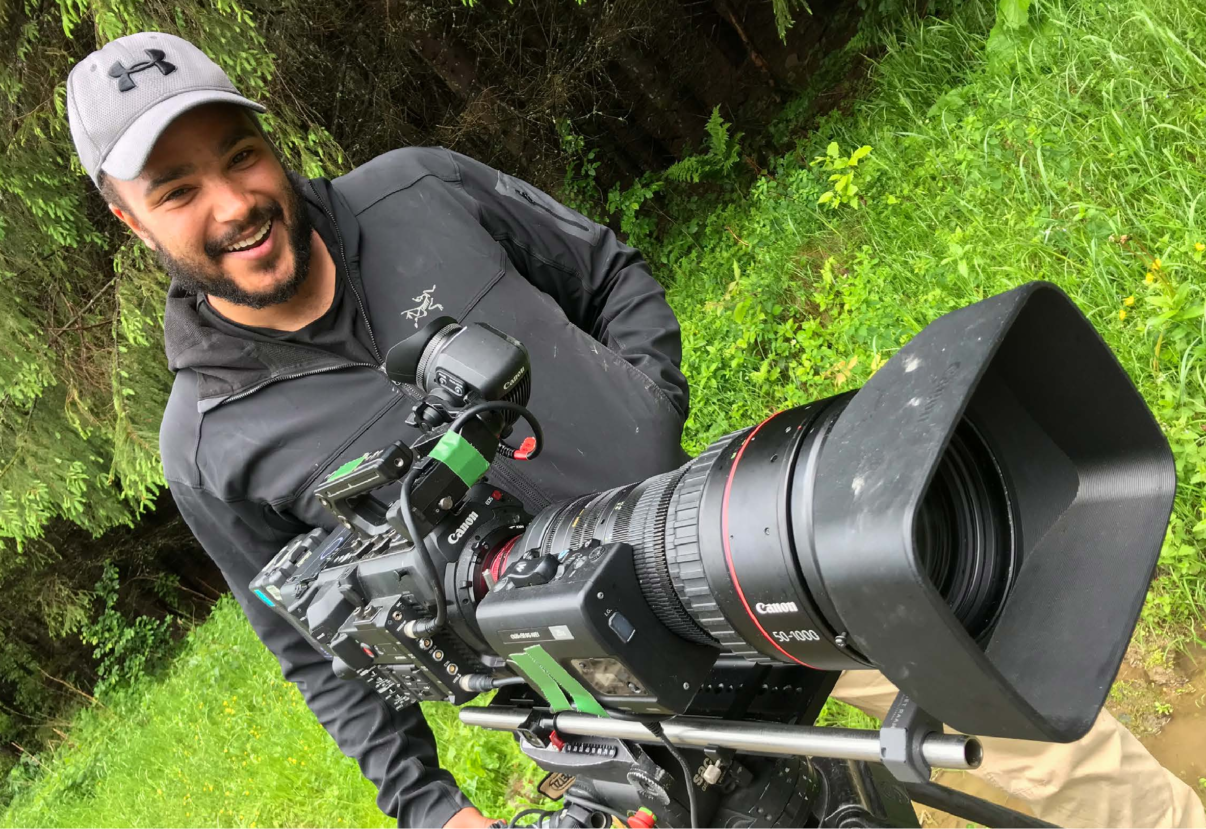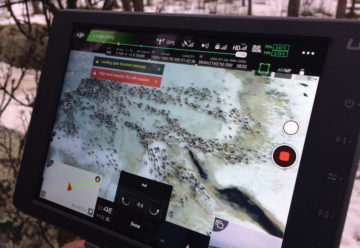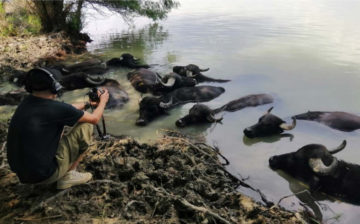Films that feature wildlife and wild nature can be incredibly powerful. A trio of captivating media productions is helping Rewilding Europe boost the global outreach of rewilding.

Capturing the moment

High up on an alpine plateau in Swedish Lapland a tense stand-off plays out. It’s early May 2019 and wildlife cameraman Louis Labrom is waiting for a herd of reindeer to embark on their spring migration. Soon the animals will journey around 200 kilometres from the Swedish interior to the Norwegian coast.
Involving the time-honoured movement of tens of thousands of animals, the twice-yearly migration of reindeer (between summering and wintering grounds) defines Swedish Lapland, shaping landscapes, ecology and indigenous culture. Yet many people, in Europe and beyond, are unaware of its existence, and the threats it faces from mining and intensive forestry, which are drastically reducing the availability of the lichen on which reindeer depend.
But with “Europe’s New Wild” – the six-part television series showcasing Europe’s magnificent wildlife comeback – broadcast worldwide, that lack of awareness will change.
An inspirational co-production

“Europe’s New Wild” tells the inspirational story of the wild rebirth of a continent. Across six episodes, the series reveals the spectacular resurgence of nature across Europe’s most varied and breathtaking landscapes. From the frozen landscapes of the Arctic to abundant river wetlands, from deep forest to rugged mountain peak, viewers will witness Europe’s most iconic wildlife returning and thriving, sometimes in the most unexpected places.
“Europe’s New Wild visualises the spectacular recovery of nature now happening across much of Europe,” explains Laurien Holtjer, Rewilding Europe’s Head of Communications. “Profiling the rewilding process and wildlife comeback in most of Rewilding Europe’s operational areas, it will change the way people think about wild nature in Europe, and its conservation.”
Global outreach
Co-produced by Rewilding Europe, Off the Fence Productions and Bonne Pioche Television, and sponsored by National Geographic International, WWF Netherlands and Canon Europe, Europe’s New Wild is broadcast in more than 45 languages, reaching at least 140 million homes in more than 160 countries. Airing mostly on Nat Geo Wild end of this summer, it will also feature on a number of European terrestrial channels.
“This series will open people’s eyes across the world”, says Susan Wright, Rewilding Europe’s (former) multimedia producer. “Apart from showcasing the amazing wildlife that Europeans have on their doorstep, which I think many people are simply unaware of, it also shows how resilient nature is, and how it can and will bounce back if we let it.”

Lives through the lens
Wild nature-based media productions don’t always need multimillion-dollar budgets to capture hearts and minds.
In 2019, “Zimbrul” (Romanian for “bison”), a candid nine-minute documentary by award-winning French filmmaker and photographer Emmanuel Rondeau, was released in November, it showcases the ongoing reintroduction of European bison in the Southern Carpathians of Romania by Rewilding Europe and WWF Romania, seen through the eyes of the people in the local village of Armeniș.
Featuring numerous one-to-one conversations with residents and people working in the Southern Carpathians rewilding area – including the former mayor of Armeniș (who approved the reintroduction programme) and a bison ranger – Zimbrul has already won glowing reviews for its authenticity and understated beauty.
European exposure

A third rewilding-focused production was produced last year. The Franco-German television network ARTE broadcast the first-ever documentary about European rewilding in France and Germany in May 2019, with a combined viewership of around 1.5 million people.
Put together by French production company Bonne Pioche and titled “L’Europe à la reconquête de la biodiversité” (“European rewilding”), the dramatic production provided a comprehensive overview of rewilding, with significant coverage of Rewilding Europe’s work. It presented a range of European rewilding areas and initiatives, including the Southern Carpathians in Romania and the Greater Côa Valley in Portugal.
Want to know more?
Europe’s New Wild airs in most countries on Nat Geo WILD. More information about the episodes and broadcast schedule can be found on the special Europe’s New Wild website. Discover interesting new blogs and extra video content related to the series by subscribing to the Europe’s New Wild newsletter.
Much of this blog was taken from a story in the Rewilding Europe Annual Review 2019 entitled “Wild about film”. A PDF of the full story can be downloaded here.
